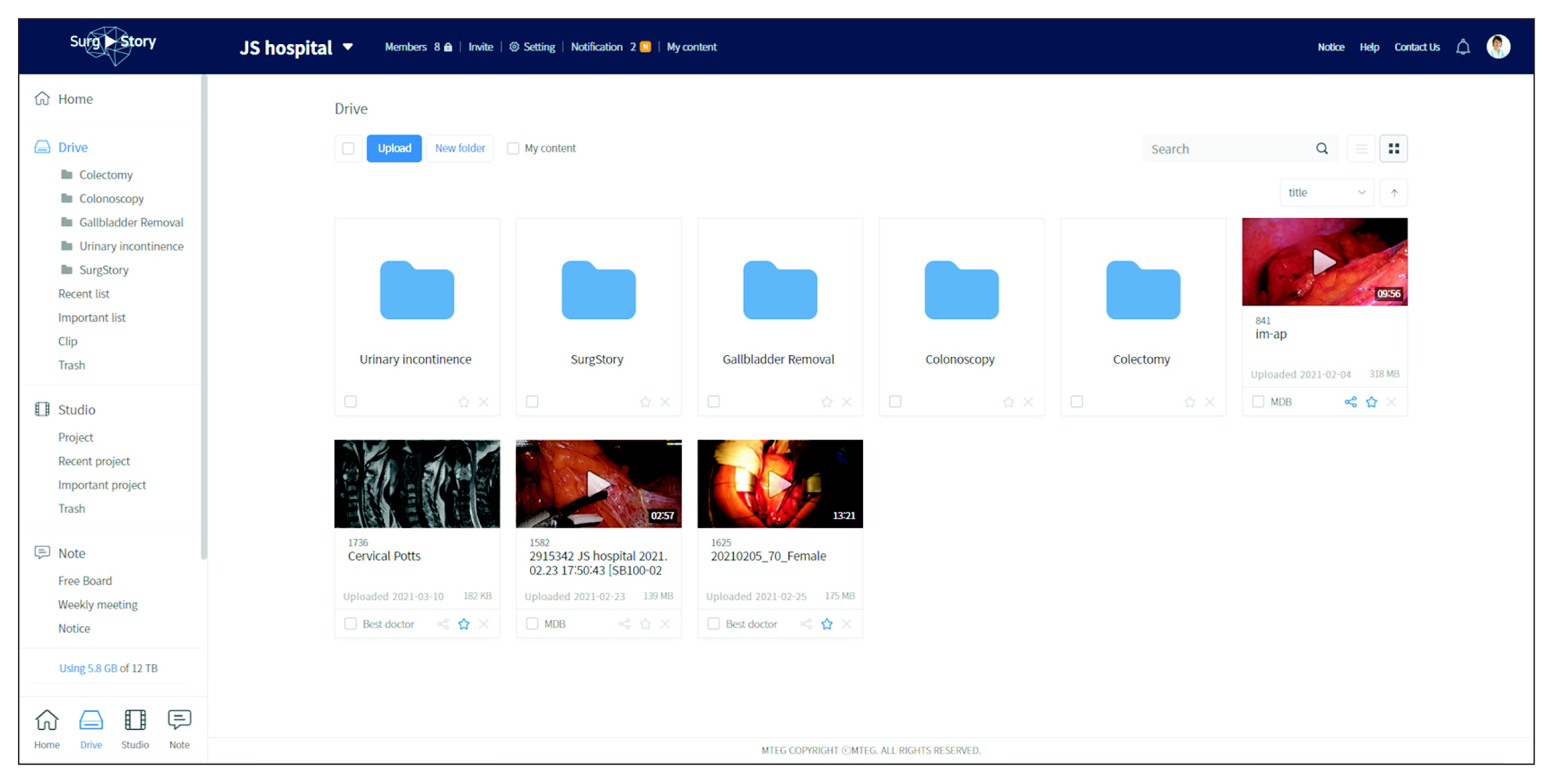Healthc Inform Res.
2021 Apr;27(2):162-167. 10.4258/hir.2021.27.2.162.
Video Archiving and Communication System (VACS): A Progressive Approach, Design, Implementation, and Benefits for Surgical Videos
- Affiliations
-
- 1MTEG Co. Ltd., Seoul, Korea
- 2Service Development Department, MTEG Co. Ltd., Seoul, Korea
- 3Service Planning Department, MTEG Co. Ltd., Seoul, Korea
- 4Medical Devices R&D Center, Gachon University Gil Hospital, Incheon, Korea
- 5Department of Biomedical Engineering, College of Health Science, Gachon University, Incheon, Korea
- KMID: 2515919
- DOI: http://doi.org/10.4258/hir.2021.27.2.162
Abstract
Objectives
As endoscopic, laparoscopic, and robotic surgical procedures become more common, surgical videos are increasingly being treated as records and serving as important data sources for education, research, and developing new solutions with recent advances in artificial intelligence (AI). However, most hospitals do not have a system that can store and manage such videos systematically. This study aimed to develop a system to help doctors manage surgical videos and turn them into content and data.
Methods
We developed a video archiving and communication system (VACS) to systematically process surgical videos. The VACS consists of a video capture device called SurgBox and a video archiving system called SurgStory. SurgBox automatically transfers surgical videos recorded in the operating room to SurgStory. SurgStory then analyzes the surgical videos and indexes important sections or video frames to provide AI reports. It allows doctors to annotate classified indexing frames, “data-ize” surgical information, create educational content, and communicate with team members.
Results
The VACS collects surgical and procedural videos, and helps users manage archived videos. The accuracy of a convolutional neural network learning model trained to detect the top five surgical instruments reached 96%.
Conclusions
With the advent of the VACS, the informational value of medical videos has increased. It is possible to improve the efficiency of doctors’ continuing education by making video-based online learning more active and supporting research using data from medical videos. The VACS is expected to promote the development of new AI-based products and services in surgical and procedural fields.
Figure
Reference
-
References
1. Sheetz KH, Claflin J, Dimick JB. Trends in the adoption of robotic surgery for common surgical procedures. JAMA Netw Open. 2020; 3(1):e1918911.
Article2. Makhni EC, Jobin CM, Levine WN, Ahmad CS. Using wearable technology to record surgical videos. Am J Orthop (Belle Mead NJ). 2015; 44(4):163–6.3. Mota P, Carvalho N, Carvalho-Dias E, Joao Costa M, Correia-Pinto J, Lima E. Video-based surgical learning: improving trainee education and preparation for surgery. J Surg Educ. 2018; 75(3):828–35.
Article
- Full Text Links
- Actions
-
Cited
- CITED
-
- Close
- Share
- Similar articles
-
- Anterior Cervical Discectomy and Fusion YouTube Videos as a Source of Patient Education
- Analysis of the Educational Value of YouTube Laparoscopic Appendectomy Videos
- Metric Evaluation of Reliability and Transparency of the Videos About Carpal Tunnel Syndrome Surgery in the Online Platforms: Assessment of YouTube Videos’ Content
- Content analysis of real-time simulation video observation records of nursing students-focusing on communication
- Evaluation of online video content related to reverse shoulder arthroplasty: a YouTube-based study







